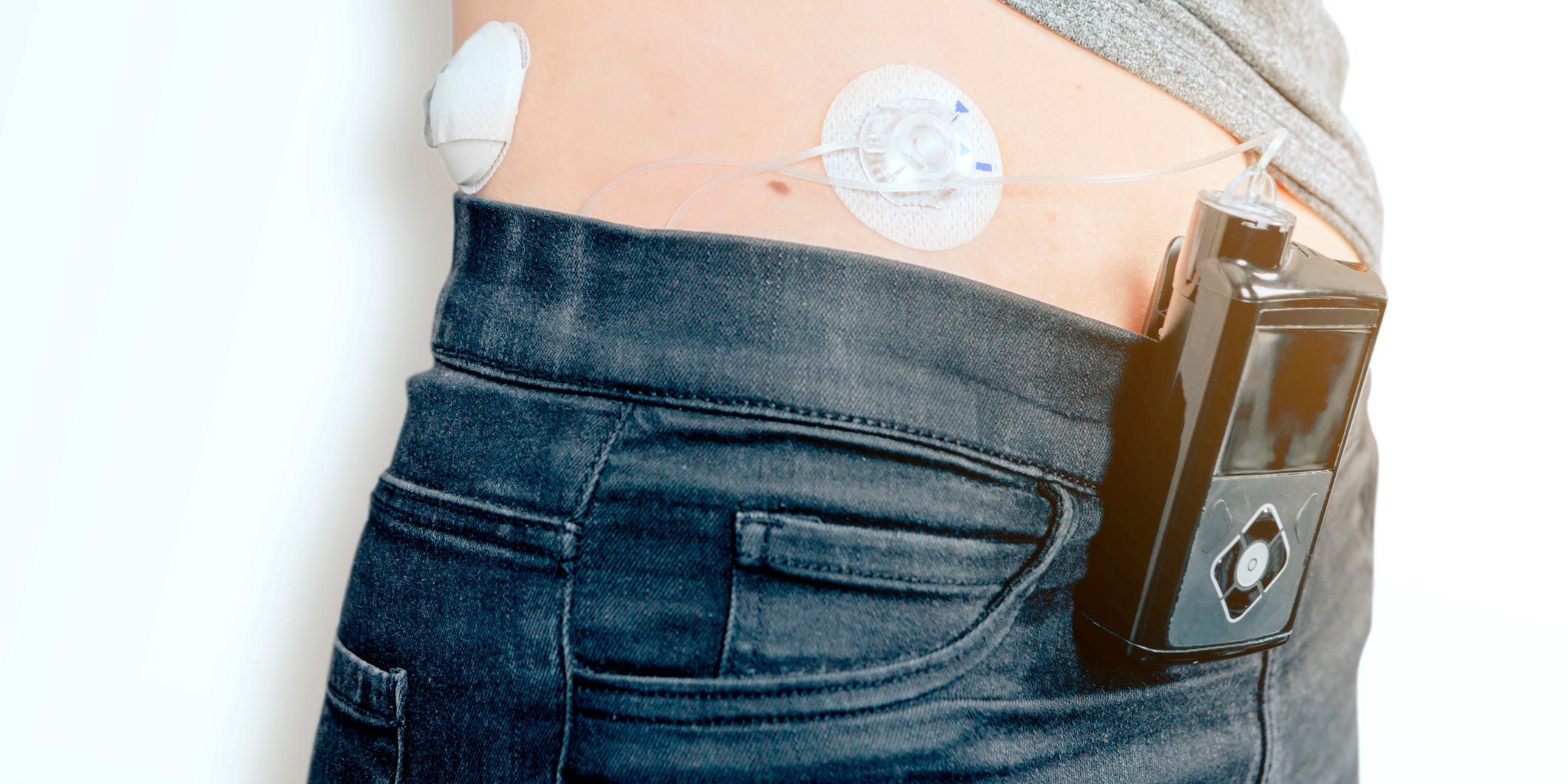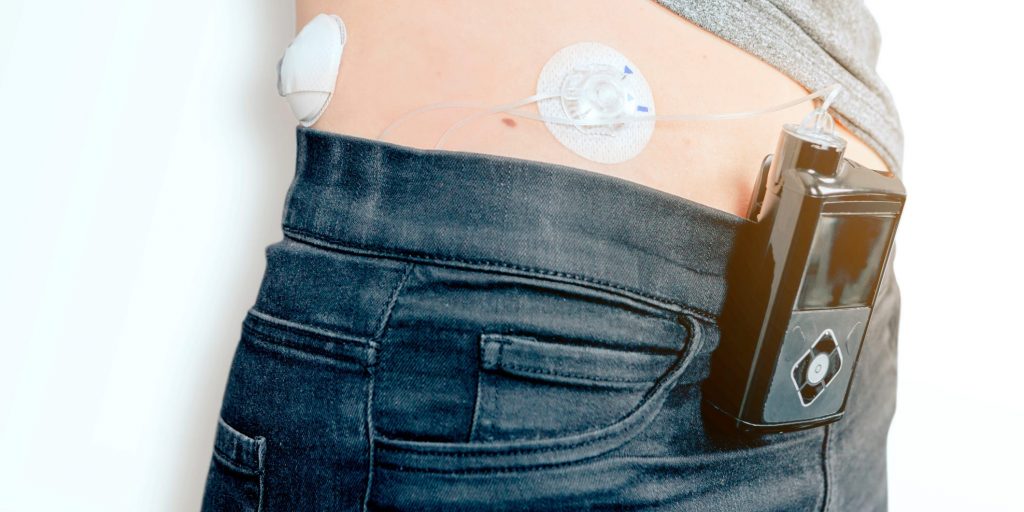
Carlo Prearo / EyeEm / Getty Images
- Insulin pumps can help people with diabetes manage their blood sugar levels.
- The small, wearable electronic device gives predetermined rates of insulin to your body.
- You may want to use an insulin pump if you have frequent low blood sugar reactions.
- Visit Insider's Health Reference library for more advice.
Insulin injections are the most common way to administer insulin for people with conditions like diabetes. But insulin pumps are another, newer option.
An insulin pump is a small electronic device designed to give predetermined rates of insulin to your body, says Diana Isaacs, a pharmacist, certified diabetes educator, and Continuous Glucose Monitoring Program Coordinator at the Cleveland Clinic in Cleveland.
Here's how an insulin pump works and how to tell if it's right for you.
What is an insulin pump?
There are two types of insulins for people with diabetes: A rapid-acting, or bolus, insulin is used around mealtimes to give a small amount of insulin every few minutes, so a separate basal insulin injection isn't needed.
An insulin pump provides your body with a small amount of insulin every few minutes, so basal insulin isn't needed.
There are two types of insulin pumps:
- Traditional insulin pumps have a container for the insulin and are attached to your body through the tubing and an infusion set. You use the pump to program insulin delivery. The pump itself is usually attached to a belt, pocket, or waistband.
- Insulin patch pumps are a type of pump you wear on your body. You control a patch pump wirelessly through a separate device to program insulin delivery.
A traditional insulin pump has a few different components. These include:
- The device itself. It has an area that holds the insulin, a pumping mechanism, the screen, a battery, and a computer chip.
- A plastic tube. It brings the insulin from the pump to the infusion set.
- The infusion set. This delivers insulin to your body with a tiny tube and needle placed under a fatty area of your skin.
Why should I use an insulin pump?
The choice to use an insulin pump instead of injections usually comes down to personal preference. However, you may want to consider an insulin pump if:
- You have frequent low blood sugar reactions.
- You have a condition called gastroparesis, which causes a delay in your stomach's ability to absorb food.
- You are planning to get pregnant.
- You want to use the pump's bolus calculator functions to set up insulin doses.
About 25% of people with type 1 diabetes use an insulin pump. Some people switch between injections and pump use. For instance, children may use an insulin pump during the school year but not in the summer.
You can use an insulin pump to give your body insulin, but you still need to check your blood sugar level. By checking your blood sugar regularly, you can make sure that the pump and the infusion are working correctly.
Pros and cons of insulin pumps
Insulin pumps have some pros and cons. One pro is that they help you calculate your insulin doses and make it easier to take bolus doses of insulin.
Additionally, the pumps that integrate with a continuous glucose monitor make it easier to manage glucose levels, says Isaacs.
However, there are also some disadvantages of insulin pumps. These include:
- The risk of a serious complication called diabetic ketoacidosis if you get disconnected from the pump. Diabetic ketoacidosis occurs when your body produces ketones, or a type of blood acid, after not making enough insulin. It can be fatal if left untreated.
- You must wear the device constantly. Ask your doctor how long you can safely disconnect from your pump, and make sure to check your blood sugar regularly if you must disconnect it.
- You have to refill the pump with insulin regularly.
- You should have extra supplies handy in case of a pump failure.
- There's a risk of infection if the infusion set is left in for too long and not changed.
How much does an insulin pump cost?
Most insulin pumps cost thousands of dollars and are purchased through insulin pump companies or durable medical equipment suppliers.
If you have type 1 diabetes or type 2 diabetes and must use multiple daily injections. Isaacs says most insurance companies cover the cost of insulin pumps. However, you may still need to pay a portion of the price for an insulin pump as part of your insurance deductible.
There is also the ongoing cost of supplies, such as infusion sets, cartridge syringes, and items to prep the skin where the pump is connected. The costs related to an insulin pump and its supplies can be pricier than traditional insulin injections.
Insider's takeaway
When used properly, insulin pumps are safe and integrate with continuous glucose monitors, making them more effective than traditional injections.
Insulin pump therapy requires education on how to use the pump and its various components correctly.
There are pros and cons to using an insulin pump, so be sure to consult with your doctor or diabetes care team to make the choice that's right for you.
